(Written by William)
While I really like the LEGO Ideas line as it is based on models submitted by LEGO fans, I must admit that when the #21307 LEGO Ideas Caterham Seven 620R was announced, I was not particularly thrilled. We already have so many vehicles under the LEGO Creator, LEGO City and LEGO Technic line, so getting another car just did not seem that exciting. However, I recently developed an interest in the large LEGO Creator Expert sets based on real vehicles, because of the intricate building techniques and many authentic details. So, when the LEGO Ideas Caterham Seven briefly went on sale, I snatched it up just to see how it was built. 🙂
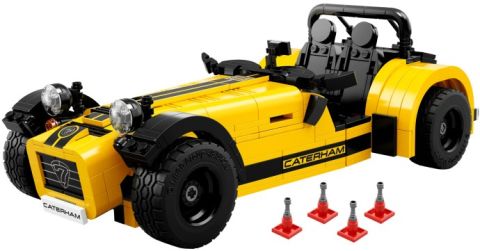
The LEGO Ideas Caterham Seven is definitely comparable to the LEGO Creator Expert sets in terms of the building experience, plus you get the higher quality packaging of the LEGO Ideas line. You can read the full review of the set at LEGO Ideas Caterham Seven Review, Thoughts, Fixes, and in today’s article, we will focus on the building techniques – which is what I was most curious about.
➡ FREE-FLOATING CONNECTIONS WITH LEGO
Most people tend to think that the whole point of LEGO is to lock pieces together. Those with a bit more experience may discover the value of sometimes laying pieces loosely to create special effects. For example, sections that can break apart as an action feature. The LEGO Ideas Caterham Seven gives three examples of the free-floating connection concept, each with a very different purpose.

The first instance of the free-floating technique is located at the back wheels. During the course of building, you are instructed to insert an axle through a number of pinholes. The axle itself does not connect to anything. Rather, it is trapped in place by giving it nowhere to move. Additionally, the axle is not connected to any moving parts. It simply sits there. The purpose of this is to add structural stability, so that the model cannot flex in upon itself. Literally, the axle is used for its durability and shape, and not for how it can attach to anything.
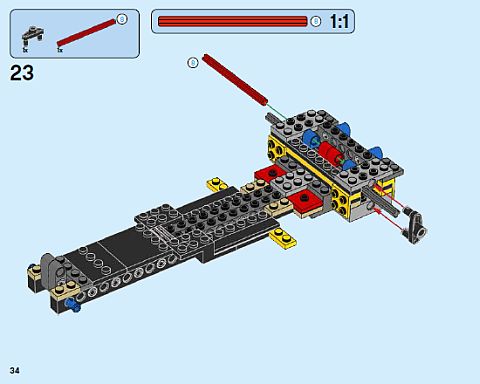
The second example of a free-floating connection can be found while adding hoses to the engine. You are given a rather long rubbery hose that is lightly placed within two pinholes. The slight rubbery quality of the part and the cramped space are the only things that keep the hose from sliding out. There are no solid attachments. Unlike the axle, the hose is used purely for decoration. It’s flexibility provides interesting shaping and engine detail.
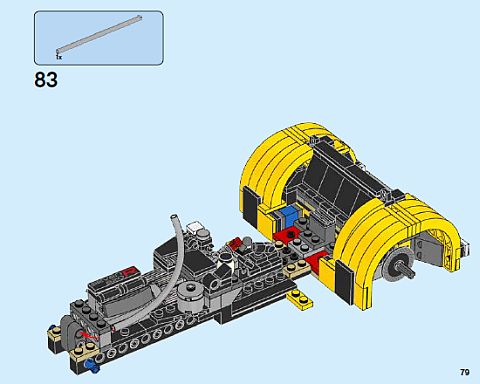
You will find the third example of a free-floating connection while attaching the side exhaust pipes. You build an odd-looking contraption with LEGO Technic pieces, and various round parts to form the pipes, with a large hook at one end. There is a clip and bar connection near the driver’s compartment to stabilize the pipes, but the other end is simply kept in place by the hook. They are not attached in any other conventional way.
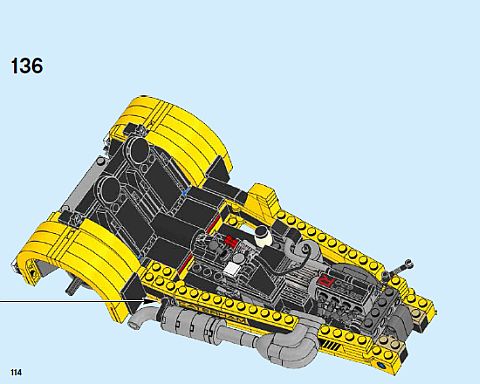
If you would like to try using the free-floating technique, the most important thing to remember is that the shape is key. Consider approaching the design like a puzzle piece. Sometimes you’ll need this style of building because you don’t have the space necessary to create a more solid connection, or there is no ordinary way to have a certain type of connection with the pieces available. Also, as you can see in the LEGO Ideas Caterham Seven, this technique can serve many roles. Whether it is for stability like the axle, decoration like the hose, or due to a lack of space like with the exhaust pipe, there are many ways to use the free-floating technique to get more out your LEGO pieces.
➡ BUILDING REAL-WORLD MODELS WITH LEGO
If you want to build a LEGO version of a real-world object, it is usually a good idea to find a solution to the smallest key feature of the model and scale everything to that. The LEGO Architecture sets are a good example of this method. As LEGO models are small compared to anything in the real world, many of the details have to be given up or compromised during the modeling process. However as long as the key features are represented well, the LEGO version will be easily recognizable.
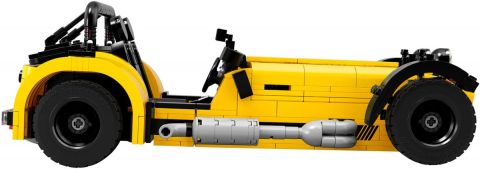
LEGO models of real-life vehicles however are extra challenging, as the shaping of the car is just as important as some of the small key features. This is why most of the LEGO models based on real vehicles are larger than minifigure-scale. Instead of asking, “What’s the smallest detail that can be recreated with LEGO?” you need to ask, “What scale is small enough to get the proper lines of the vehicle?” Consider this a macro approach instead of a micro approach. In fact, this is exactly what the designer of the LEGO Ideas Caterham Seven did when creating his original model. He chose the car for its distinct lines, and used that fact as a guide for what scale could capture the car’s unique profile.
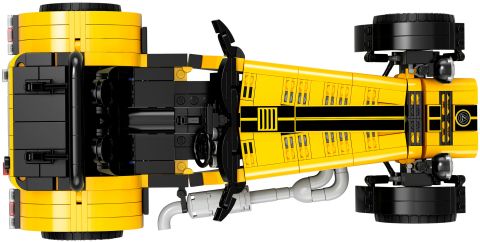
The odd thing with this technique is that once you figure out the overall body shape and scale, you can then revert back to figuring out what is the smallest detail you can add given the set measurements. Most of the time you’ll find out that you have to give up very little detail, since the body shape requires a larger, more open scale for modeling. This approach allows you to create models that are much better detailed, however on the downside it means that most of the time they will be larger than minifigure-scale. Additionally, the design may require more parts, making this style of building a bit pricier.
➡ APPLYING WHAT YOU LEARN
Once I got over my prejudice of vehicle modeling with LEGO, I found a whole new aspect of the hobby that I haven’t experienced before. While some of the techniques can also be found in minifig-scale sets, they are sometimes used so differently and with so much more functionality at the larger modeling scale. Even if you are normally a minifig-scale builder, trying out a larger scale occasionally will make you appreciate the usefulness of some of the pieces even more.
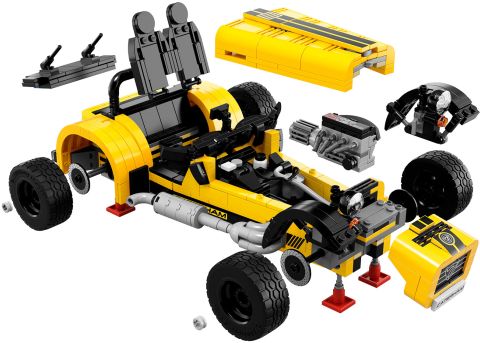
Building with LEGO Technic pieces is very different from using standard LEGO elements. However, because LEGO Technic and regular LEGO are fully compatible, trying out few LEGO Technic sets can greatly enhance your building skills with standard LEGO elements. Similarly, learning to build different scale LEGO models can make you more intimately aware of the possibilities of LEGO elements, which will make you an overall better builder.
When you are trying to recreate a real-world object in LEGO, it is a good idea to ask yourself, “What is the most important feature to represent?” If it is the compact size, like with buildings, use the micro approach of finding the smallest detail. If it is the realistic look, consider the macro approach of creating the overall shape first. And if it is function, then you may need to look at some LEGO Technic sets for inspiration.

What do you think? How do you like the LEGO Ideas Caterham Seven, and other larger LEGO model cars? Do you have a favorite? What unique building techniques you noticed in the sets? Feel free to share your thoughts and own review in the comment section below! 😉
And you might also like to check out the following related posts:












There is another example of the freefloating technique in the set. The black stripe over the hood is only connected on one end. On the other end a 2×2 round plate is sitting inside a hole with no connections, just to keep it in place. Great observation about these techniques.
Hm… now that you mention it, yeah, that sounds like another good example. Nice find! I will let William know. 🙂
It’s very true that at different scales parts and techniques will have different meanings and usage. I prefer minifig size sets, but occasionally building on a larger scale is an interesting experience.
Yes, trying out larger-than-minifig-scale sets, at least occasionally, can be a very enlightening experience. The priorities are different, parts are used differently, and of course the scale is different as well.